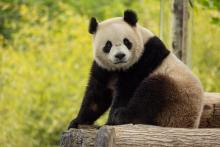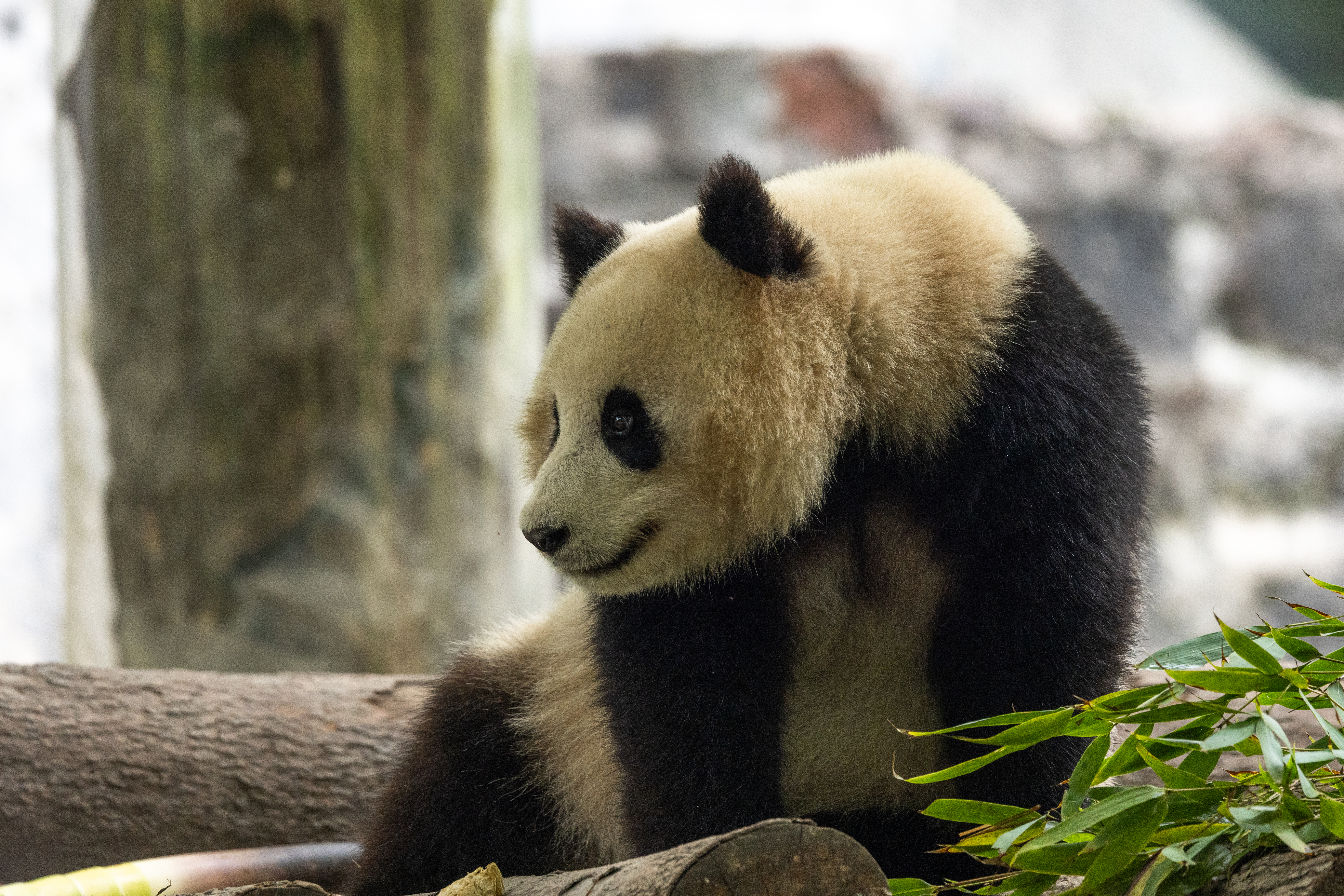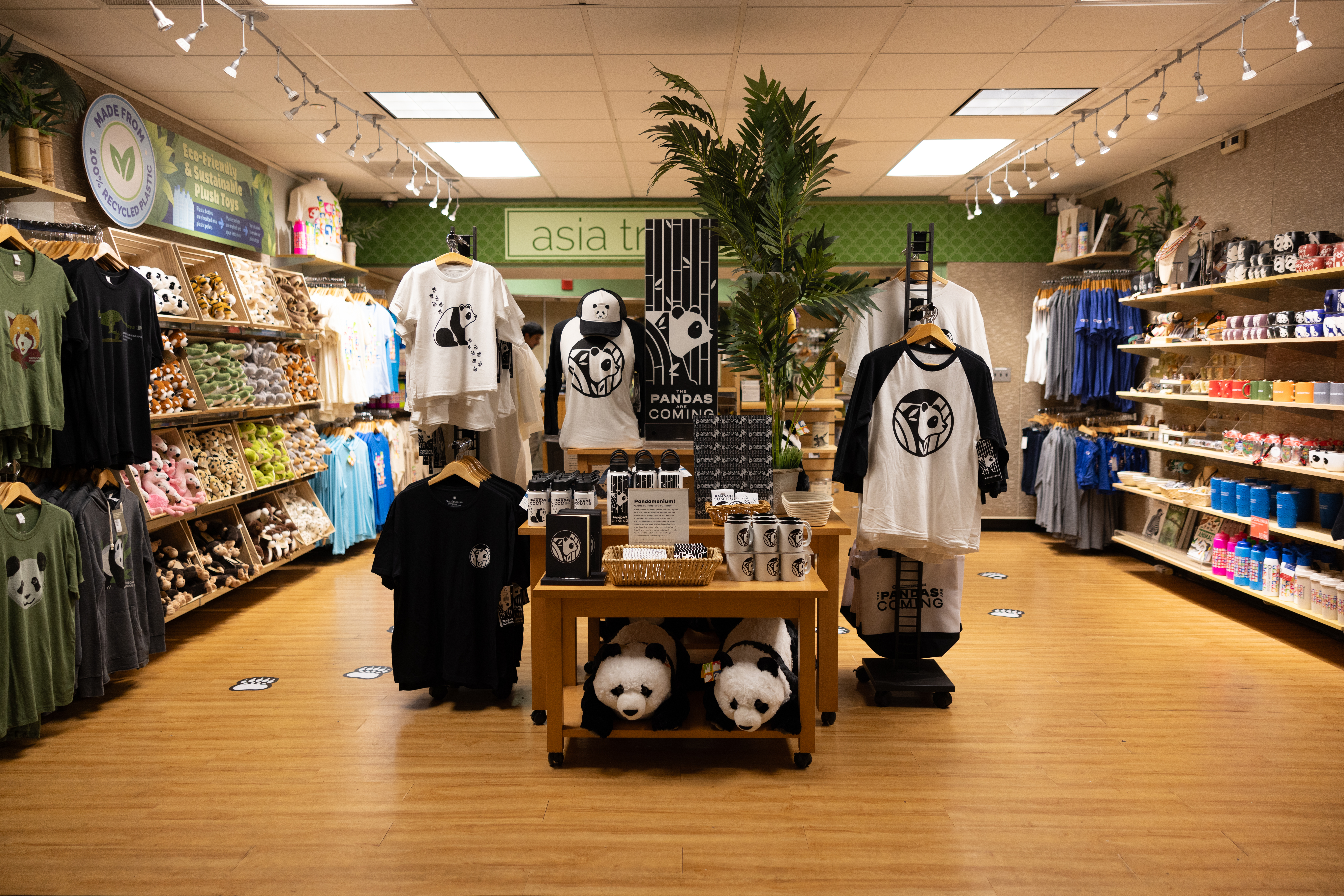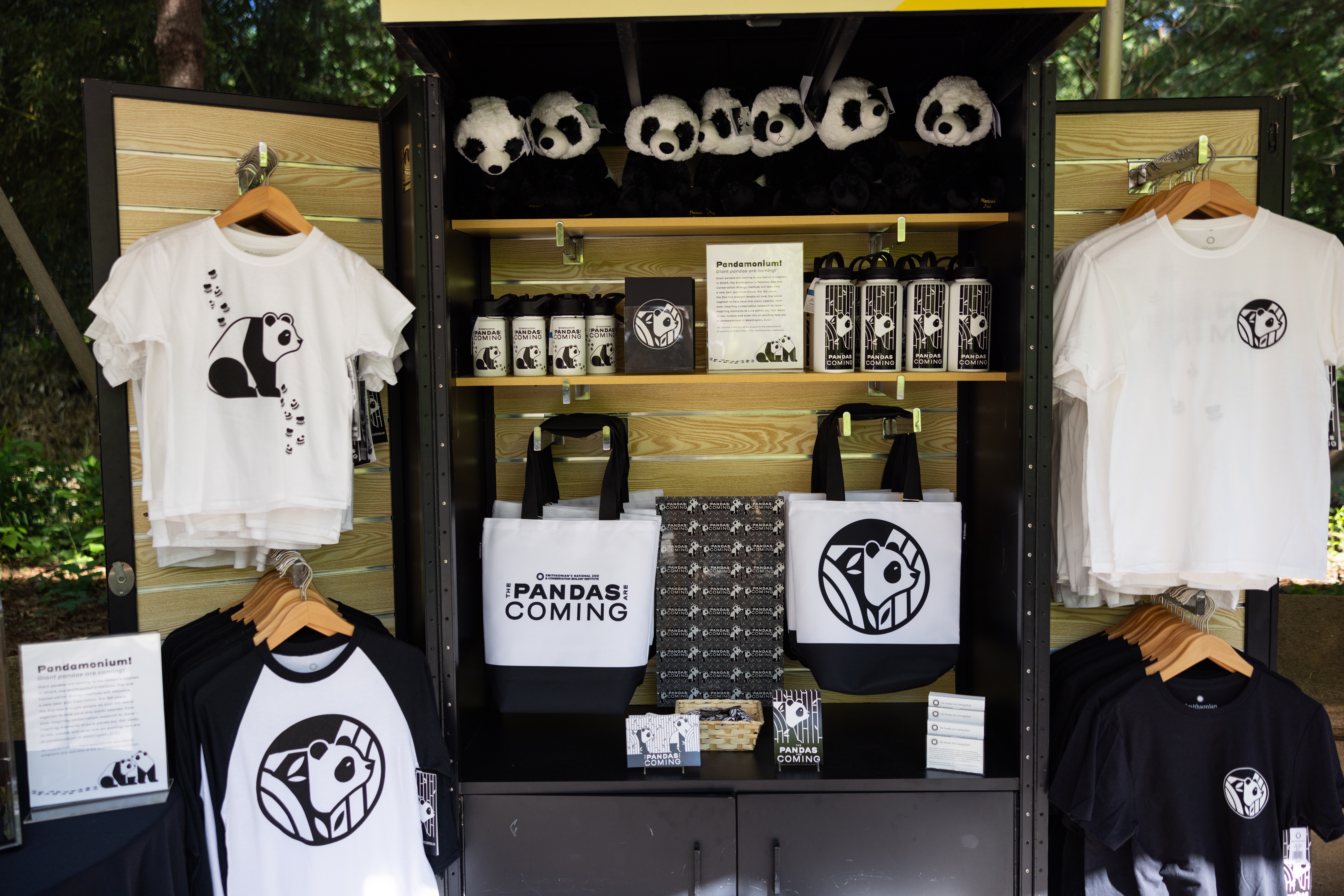Two New Giant Pandas Coming to Smithsonian’s National Zoo and Conservation Biology Institute From China by End of the Year
New 10-Year Research and Breeding Agreement Signed
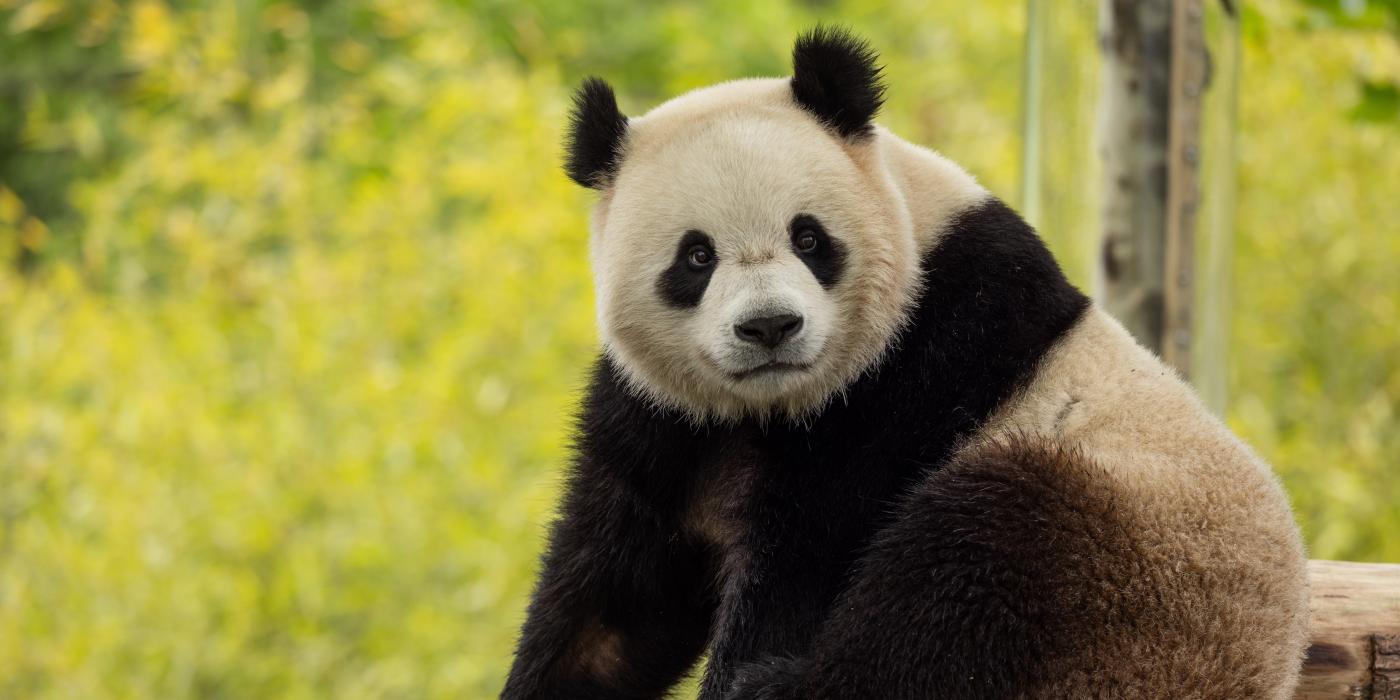
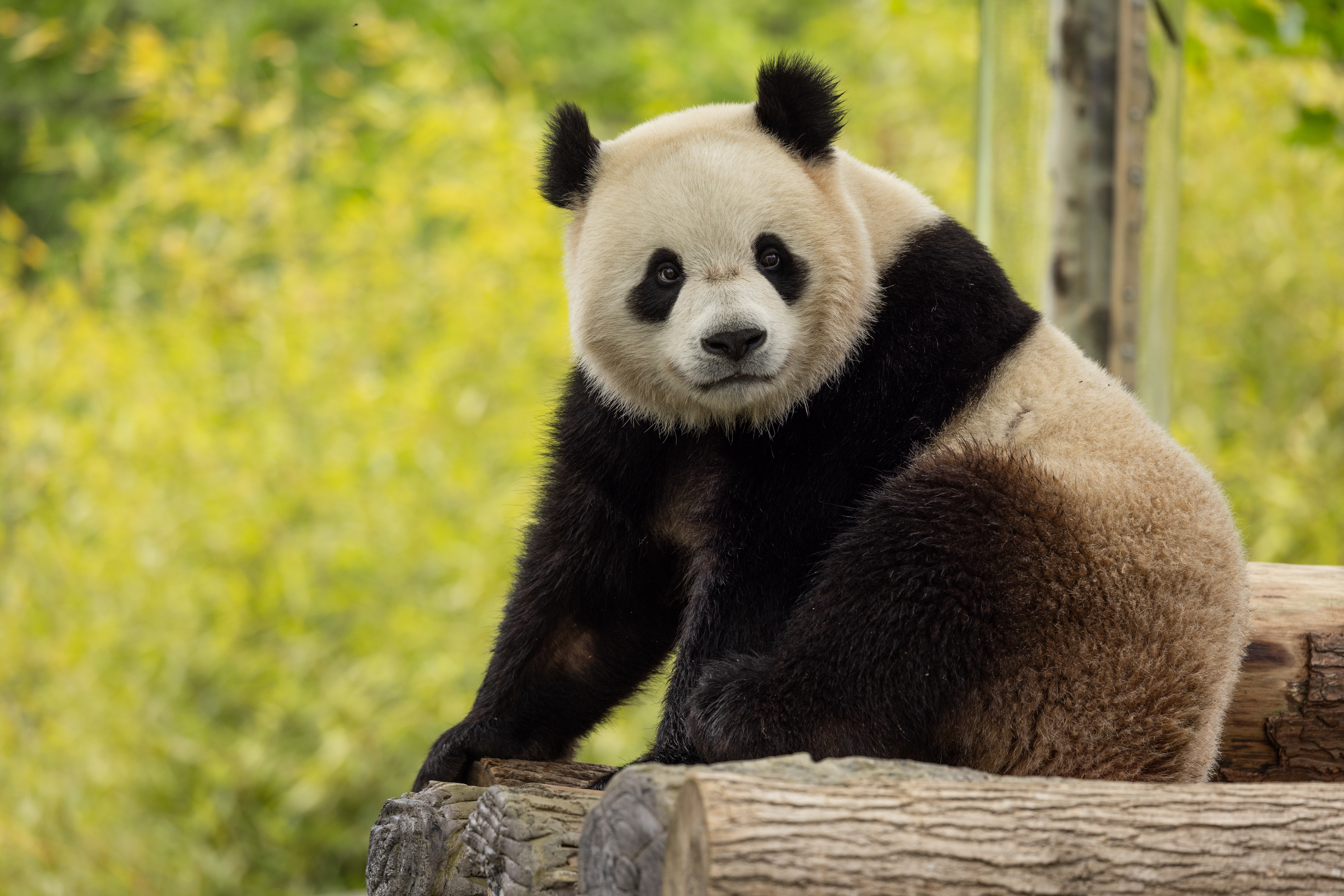
Two-year-old male giant panda Bao Li in his habitat at Shenshuping Base in Wolong, China, May 16. Photo 1 credit: Roshan Patel, Smithsonian’s National Zoo and Conservation Biology Institute.

Two-year-old female giant panda Qing Bao in her habitat at Dujiangyan Base in Sichuan, China May 17. Photo 2 credit: Roshan Patel, Smithsonian’s National Zoo and Conservation Biology Institute.
Additional photos are available at the bottom of this page and in the Zoo’s newsroom. Download b-roll from Dropbox.
Watch: Smithsonian Secretary Lonnie G. Bunch III and NZCBI Director Brandie Smith are joined by First Lady Dr. Jill Biden to announce the return of giant pandas. Download from Dropbox.
Today, May 29, the Smithsonian’s National Zoo and Conservation Biology Institute (NZCBI) announced it will welcome a new pair of giant pandas, Bao Li [BOW-lee] and Qing Bao [ching-BOW], to the Zoo by the end of the year. Giant pandas are icons in Washington, D.C., and beloved around the nation and the world. For more than five decades, NZCBI has created and maintained one of the world’s foremost giant panda conservation programs, helping move the panda from “endangered” to “vulnerable” on the global list of species at risk of extinction.
“We’re thrilled to announce the next chapter of our breeding and conservation partnership begins by welcoming two new bears, including a descendent of our beloved panda family, to Washington, D.C.,” said Brandie Smith, NZCBI’s John and Adrienne Mars Director. “This historic moment is proof positive our collaboration with Chinese colleagues has made an irrefutable impact. Through this partnership, we have grown the panda population, advanced our shared understanding of how to care for this beloved bear and learned what’s needed to protect wild pandas and preserve native habitat.”
In the video announcement released today on NZCBI’s social media channels, First Lady Dr. Jill Biden joined Smithsonian Secretary Lonnie G. Bunch III and Smith to reveal pandas are coming back to the nation’s capital. This news comes just six months after giant pandas Tian Tian, Mei Xiang and their cub, Xiao Qi Ji, went to China last November, prompting a nationwide outpouring of farewell from millions of panda fans of all ages. One of the two new giant pandas is related to NZCBI’s former “panda family”:
- Bao Li: Two-year-old male Bao Li—whose name means “treasure” and “energetic” in Mandarin Chinese—was born Aug. 4, 2021, at the China Conservation and Research Center for the Giant Panda (CCRCGP) in Sichuan to father An An and mother Bao Bao. Not only was Bao Li’s mother born at NZCBI in 2013, his grandparents, Tian Tian and Mei Xiang, lived at NZCBI from 2000 to 2023, where they served as ambassadors for their species.
- Qing Bao: Two-year-old female Qing Bao—whose name means “green” and “treasure” in Mandarin Chinese—was born Sept. 12, 2021, at CCRCGP, to father Qing Qing and mother Jia Mei. Qing, her father’s name, evokes the lush and mountainous habitat where giant pandas roam in the wild. Bao, which means “treasure,” reflects that she is cherished by all who know her.
Bao Li currently lives at the Shenshuping Base in Wolong. Qing Bao lives at Dujiangyan Base in Sichuan.
FedEx will serve as the Zoo’s transportation partner using their integrated air and ground network by providing a dedicated flight and ground transportation for the bears and their animal care team from China to the Zoo in Washington, D.C.
“We look forward to once again calling the FedEx Panda Express into service and using our logistical expertise to safely move Qing Bao and Bao Li to Washington, D.C.,” said Richard W. Smith, president and chief executive officer, Airline and International, FedEx. “It’s a privilege to take part in this next phase of the Smithsonian’s National Zoo and Conservation Biology Institute’s giant panda program and provide the safest and most comfortable transportation for these beloved animals.”
Per standard procedure, the pandas will be quarantined in the panda house for a minimum of 30 days upon arriving at NZCBI. Quarantine of new animals is a routine practice in zoos accredited by the Association of Zoos and Aquariums to reduce risk of introducing parasites or disease to other animals. During this period, they will have access to enclosures inside the panda house. A team of keepers, nutritionists and veterinarians will care for them the entire time. Animal care staff will provide the pandas with a variety of enrichment items to keep them active and encourage them to explore their new environment. After quarantine ends, the bears will have a few more weeks to settle into their new habitat. The public debut date will be announced as soon as the animal care team feels the bears are ready to meet visitors.
New Agreement and Conservation Priorities
A cooperative research and breeding agreement signed by Smith and Wu Minglu, secretary general of the China Wildlife Conservation Association (CWCA), is effective through April 2034. NZCBI has filed a permit application to import a pair of giant pandas from China with the U.S. Fish and Wildlife Service.
The terms of the new agreement are similar to previous agreements. A male and female giant panda recommended for breeding will be sent from China to NZCBI. Both adults and any offspring remain under the ownership of China. Any cubs born at NZCBI will move to China by the age of 4. As part of the agreement, NZCBI and partners in China will conduct cooperative research projects in China and at the Zoo in Washington, D.C. In line with all zoos outside of China who care for and exhibit giant pandas, NZCBI will pay a $1 million annual fee to CWCA to support research and conservation efforts in China. Federal funding is not used to pay the annual fee.
This agreement commences a new chapter in NZCBI’s efforts to care for, breed and study these iconic animals. The Smithsonian and Chinese partners will work together to innovate new techniques and pursue research to contribute to the health and welfare of giant pandas in human care and expand work critical to the conservation of giant pandas in the wild. Collaborative research priorities and projects include:
- Assessing giant pandas’ movements to identify the key forest corridors that make it possible for the bears to find food and mates.
- Examining how the connectivity of reserves and protected areas support giant pandas and hundreds of animal species that share their habitat, including the red panda, golden pheasant and snub-nosed monkey. This information can help scientists improve management strategies, mitigate threats and increase biodiversity.
- Creating bamboo restoration plots to expand the amount of habitat available for giant pandas.
- Analyzing the impacts of climate change on giant panda habitat by measuring the growth of bamboo under experimentally increased temperatures. Results will inform management and improve resilience to climate change.
- Offering comprehensive workshops and hands-on training courses for veterinary staff to share expertise and build skills in dental health, geriatric care and anesthetic techniques.
- Expanding Chinese wildlife professionals’ and students’ ability to track and monitor wildlife and natural resources through training and mentoring.
Fundraising Campaign and Getting Ready for the New Pandas
Ahead of the new giant pandas’ arrival, NZCBI is seeking $25 million in public and corporate donations to be used over the next 10 years. These funds will enable one-time renovations to the Zoo’s indoor and outdoor panda exhibit, Giant Panda Cam upgrade and maintenance, insurance, permitting, administrative staff and associated operating costs as well as support vital conservation research that protects biodiversity in the bears’ native habitat. Federal funding covers essential animal care expenses such as food, medicine, animal care staff and facilities maintenance for all animals at NZCBI. NZCBI needs to raise 74% of the annual $2.8 million giant panda conservation program budget—including funds to cover the Smithsonian’s ongoing conservation research and the annual fee paid to the CWCA—from donations, annual membership support and in-park revenue.
Construction has been underway at the David M. Rubenstein Family Giant Panda Habitat since November 2023. Last renovated in 2006, the indoor and outdoor habitats are being updated to enhance the safety of the facilities and maximize space for the bears to roam. New, permanent furnishings will encourage the pandas to use their natural behaviors to explore, exercise, forage, play and rest. These enriching enhancements include new rock structures with shallow pools, bamboo stands for foraging, multi-level climbing structures and enrichment items to stimulate pandas’ physical and cognitive skills.
Since the first pair arrived at the Zoo in 1972, pandas have been one of the biggest attractions at the Zoo, which now draws an estimated 1.9 million visitors annually. Generations of visitors have stopped by the Zoo and millions more have watched NZCBI’s Giant Panda Cam, which has garnered more than 100 million page views since its launch in 2000. It went offline Nov. 8, 2023, when giant pandas Tian Tian, Mei Xiang and Xiao Qi Ji departed for China. NZCBI will relaunch the Giant Panda Cam when its new pair of pandas make their public debut, ensuring virtual visitors can join in the celebration and welcome the animal ambassadors to Washington, D.C. Fans from around the world have learned about conservation research and had glimpses into their lives—from their births and first steps to munching bamboo and playtime in the snow.
To follow the latest news about NZCBI’s panda program, visit the Zoo’s website, subscribe to its e-newsletter, and follow on Facebook, Instagram, YouTube and X.
About the Smithsonian’s National Zoo and Conservation Biology Institute
The Smithsonian’s National Zoo and Conservation Biology Institute (NZCBI) leads the Smithsonian’s global effort to save species, better understand ecosystems and train future generations of conservationists. Its two campuses are home to some of the world’s most critically endangered species. Always free of charge, the Zoo’s 163-acre park in the heart of Washington, D.C., features 2,200 animals representing 400 species and is a popular destination for children and families. At the Conservation Biology Institute’s 3,200-acre campus in Virginia, breeding and veterinary research on 264 animals representing 20 species provide critical data for the management of animals in human care and valuable insights for conservation of wild populations. NZCBI’s more than 300 staff and scientists work in Washington, D.C., Virginia and with partners at field sites across the United States and in more than 30 countries to save wildlife, collaborate with communities and conserve native habitats. NZCBI is a long-standing accredited member of the Association of Zoos and Aquariums.
# # #
Photo 1 caption: Two-year-old male giant panda Bao Li in his habitat at Shenshuping Base in Wolong, China, May 16. Photo 1 credit: Roshan Patel, Smithsonian’s National Zoo and Conservation Biology Institute.
Photo 2 caption: Two-year-old female giant panda Qing Bao in her habitat at Dujiangyan Base in Sichuan, China May 17. Photo 2 credit: Roshan Patel, Smithsonian’s National Zoo and Conservation Biology Institute.
Related Species:
Image Gallery
